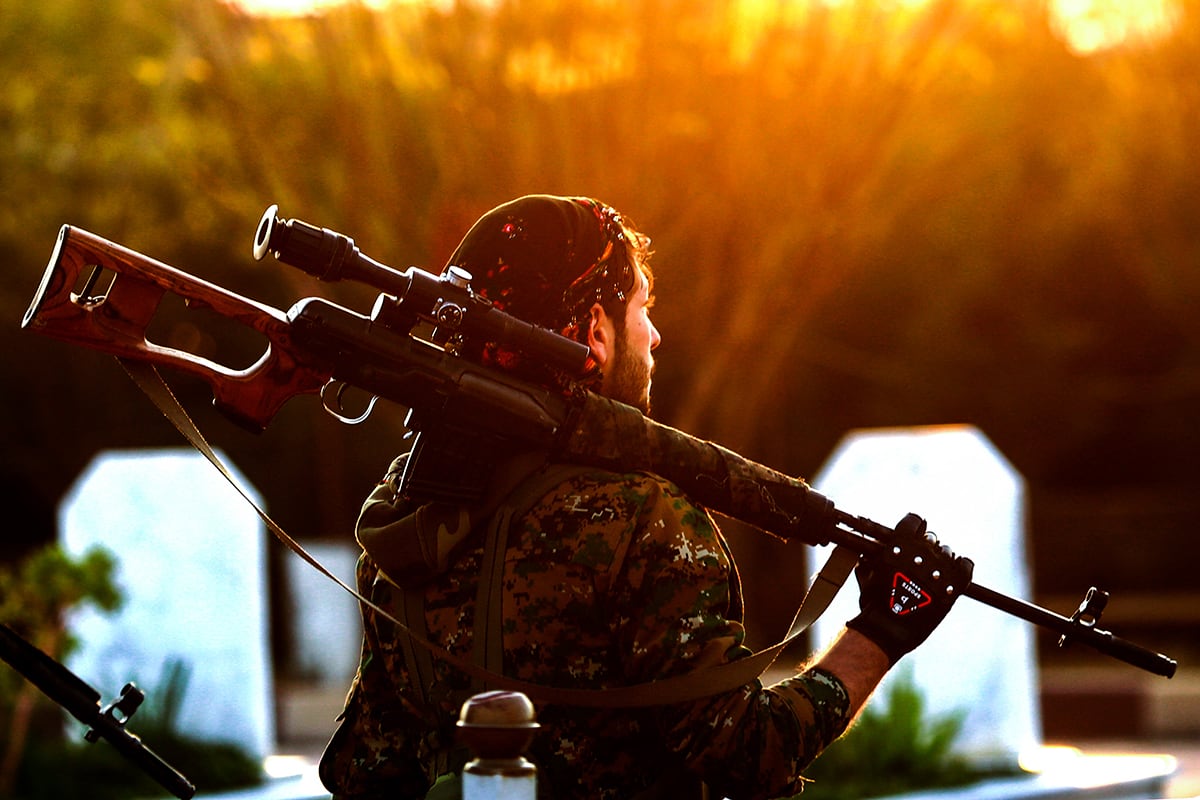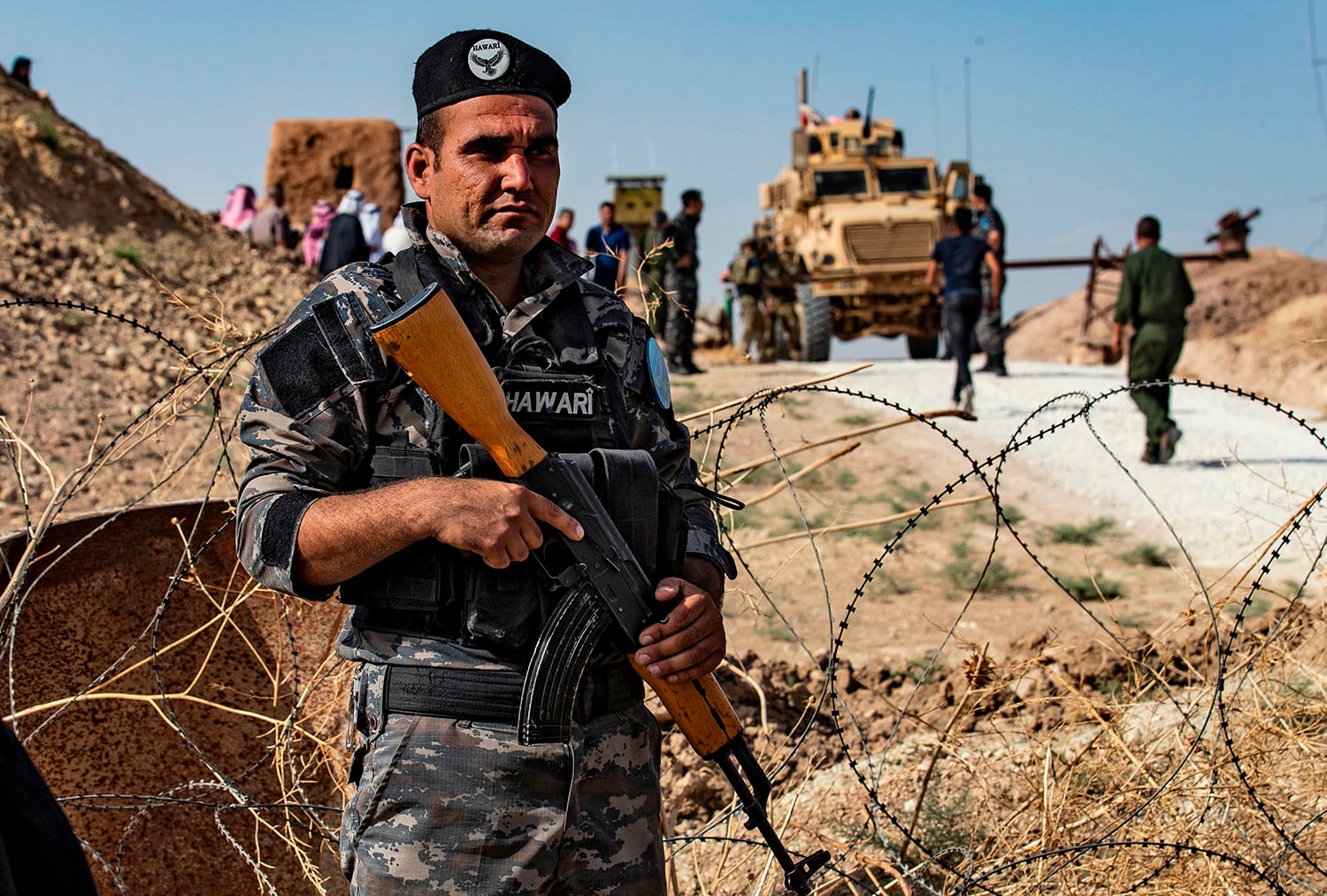For nearly five years American commandos have served beside Kurdish-led forces as they battled ISIS militants across northern Syria.
Now abandoned by their U.S. partners, Kurdish fighters in Syria are embracing Russia and Syrian regime forces for help to thwart a Turkish incursion raging across northeastern Syria.
The new partnership for the Kurdish fighters may be an intelligence bonanza for Russia and Syria as U.S.-backed Syrian Democratic Forces have spent years working alongside American commandos gauging tactics, techniques, procedures, equipment, intelligence gathering and even potentially names of operators.
The SDF claim the coalition also helped build and train an anti-ISIS commando force known as Yekineyen Anti-terror, or YAT. The group, often seen decked out in U.S. night vision, weapons and sensitive optics, is tasked with hunting down ISIS sleeper cells.
A former U.S. military intelligence operator, who spent years working with special operations forces, told Military Times that the potential spillover of sensitive tradecraft or information by the SDF was “super problematic," but also a symptom of the lack of a genuine strategy in the region.

A former U.S. defense official, who spoke on condition of anonymity, said the SDF wouldn’t have “formal” intelligence to share, “but they’ll have inside knowledge on some individuals, operating procedures or response times for aircraft.”
U.S. troops have oft described their partner force as competent and loyal, but SDF forces could be coerced into sharing information with Russia.
“They may be coerced. I don’t think they’ll [SDF] enjoy it, but they may be in survival mode and will need to cut deals with bad actors,” the former defense official said
However, the issue isn’t any more alarming than when special operations forces deployed to Africa a few decades ago were confronted with changing loyalties of partner forces on the continent, the former military intelligence official said.
“We need to ask ourselves: ‘Should we be committing forces to work with a partner nation force without a genuine functional strategy in an area?’” the intelligence official said.
“Without a real national strategy for the region we are going to continue to struggle with issues like changing loyalties and exposing our SOF [special operations forces] and conventional forces that partner with other forces to compromise with our near-peer adversaries,” he said.
Retired Marine Maj. Fred Galvin, a former recon and Raider commander who served in Afghanistan, told Military Times that it was “critical” for special operators to safeguard personally identifiable information as well as tactics, techniques and procedures used on the battlefield.
“Compromise of this information places SOF at great risk and removes their focus on the mission if they know the enemy can target their family at home,” Galvin said.
At times, special operations forces may work with partner forces using fake names, especially if there is an insider threat, Galvin explained.
“SOF has tried to mitigate it, they always do — it’s just that we’ve never had a force completely defect to an opposition like this before,” the former defense official said.
The SDF’s loyalties shifted dramatically Sunday as the Pentagon announced it was removing the remaining U.S. forces out of northern Syria.
RELATED

Left to fend for themselves, the Kurdish-led forces sought a deal with Russian and Syrian troops to help stymie the tide of the Turkish assault that was launched on Oct. 9.
Syrian state run media SANA has posted photos of Syrian forces moving into SDF controlled towns as Syrian regime forces continue to barrel towards Turkish military positions.
The U.S. has struggled to piece together a cohesive strategy in Syria, the endgame for America’s Kurdish partners has been ambiguous from the start.
U.S. military officials have repeatedly made statements that America’s operations in Syria were focused on combating ISIS, and objected to criticisms that the country was wading into the greater quagmire of Syria’s civil war.
However, U.S. forces’ presence in Syria have forced troops to confront the greater politics of the Syrian conflict.
RELATED

In June 2017, a U.S. Navy Hornet shot down a Syrian SU-22 after it showed hostile intent towards coalition forces on the ground. And on several occasions, the U.S. has been forced to defend itself from Syrian and Russian-backed proxy forces operating around the al-Tanf garrison near the Syria-Iraq border.
Despite America’s insistence that it doesn’t want to be involved in Syria’s civil war, the U.S. has been unable to avoid it.
America’s choice to continue to support its Kurdish fighters meant the U.S. could no longer remain a non-player in the Syrian conflict.
President Donald Trump finally put some of those notions to rest Monday night when he announced that the U.S. would withdraw American troops from Syria. Only a small handful of American commandos will remain at the al-Tanf garrison.
Secretary of Defense Mark Esper announced Monday that the withdrawal of troops from Syria was an attempt to avoid “being engulfed in a broader conflict."
Turkey has oft voiced its concern with the U.S. over its Syrian partner force that Turkey believes is a terrorist group and a threat to its national security.
Shawn Snow is the senior reporter for Marine Corps Times and a Marine Corps veteran.




